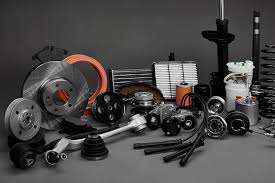Introduction
Cost-effective Spare Parts management is a key element in ensuring the efficient and reliable operation of cooling and heat transfer systems. With these systems playing a critical role in maintaining optimal performance across various industries, managing spare parts in a cost-effective manner is essential to reduce downtime, minimize maintenance costs, and extend equipment lifespan. By adopting best practices such as predictive maintenance, inventory optimization, and strategic supplier relationships, businesses can ensure that the right parts are available when needed, without overstocking or incurring unnecessary expenses. Spares List
Implement a Preventive Maintenance Program
- Establishing a regular preventive maintenance (PM) schedule is essential for identifying wear and tear on components before they fail. By replacing parts at predetermined intervals, you can extend the lifespan of your system and avoid emergency repairs that can be costly.
- Regular inspections and scheduled replacements help to reduce the need for expensive unplanned downtime and the reactive purchase of emergency spares.
Analyze Spare Parts Demand
- Understanding the usage pattern of spare parts is crucial. By analyzing historical maintenance data, you can predict which parts are likely to fail and which ones will require frequent replacement.
- This data-driven approach ensures that you only stock the parts that are necessary, reducing inventory costs and preventing overstocking of rarely used parts.
Collaborate with OEMs for Efficient Sourcing
- Working closely with Original Equipment Manufacturers (OEMs) allows you to obtain high-quality, compatible spare parts at competitive prices. OEMs offer parts that are specifically designed for your cooling or heat transfer systems, ensuring optimal performance and reducing the likelihood of operational disruptions.
- OEM partnerships often come with extended warranties, technical support, and timely delivery, which contributes to smoother operations and reduced downtime.
Utilize Just-in-Time (JIT) Inventory
- JIT inventory management minimizes the storage of spare parts, reducing costs associated with excess inventory, including storage fees and the risk of obsolescence.
- By maintaining a lean inventory and ordering parts as needed, businesses can improve cash flow while ensuring that critical components are available when required.
Standardize Spare Parts Across Systems
- Standardizing parts across different systems within your operation reduces the complexity of managing multiple types of components. For example, using the same seals, gaskets, or motors in various cooling systems streamlines inventory and simplifies procurement.
- Standardized parts are easier to stock and maintain, lowering the total number of items you need to track, which in turn reduces costs.
Leverage Technology for Spare Parts Management
- Implementing a Computerized Maintenance Management System (CMMS) or Enterprise Resource Planning (ERP) software allows for real-time tracking of spare parts, improving inventory visibility and control.
- These systems help streamline the ordering process, automate stock level monitoring, and provide accurate forecasting of spare parts needs. Additionally, they can assist in tracking the condition of parts and scheduling timely replacements based on usage data.
Ensure Proper Storage and Handling
- Proper storage of spare parts is crucial for maintaining their condition and ensuring their availability when needed. Ensure that spare parts are stored in a clean, dry environment, and that they are organized to reduce retrieval times.
- Proper handling also includes rotating stock to ensure that older parts are used first, which helps prevent parts from becoming obsolete or expired before use.
Negotiate with Multiple Suppliers
- Relying on a single supplier for spare parts can limit your options and increase costs. By diversifying your supplier base, you can leverage competitive pricing, improve lead times, and increase flexibility in sourcing.
- Establishing long-term relationships with suppliers who offer discounts on bulk purchases or fast shipping can further reduce costs.
Plan for Emergency Spares
- While preventive maintenance helps reduce the likelihood of failures, it is still important to have critical spare parts on hand for emergencies. Identify the most critical components that could cause a system shutdown if they fail and ensure that these parts are readily available in your inventory.
- Having a small stockpile of these critical spares helps minimize downtime during unexpected failures while avoiding the excessive costs of emergency procurement.
Track Spare Part Lifecycles
- Monitoring the lifecycle of your spare parts is essential for optimizing your inventory. Keep track of the age, usage, and condition of parts to determine when they are likely to wear out or become obsolete.
- By replacing parts before they fail, you can avoid unplanned downtime and costly repairs, ensuring a more predictable and cost-efficient operation.
Conclusion
cost-effective spare parts management is vital for maintaining the efficiency and reliability of cooling and heat transfer systems. By implementing best practices such as preventive maintenance, inventory optimization, and strategic supplier partnerships, businesses can reduce downtime, lower operational costs, and ensure the longevity of critical equipment. Effective spare parts management allows companies to proactively address potential issues, streamline operations, and enhance system performance, ultimately contributing to a more efficient and cost-effective operation.

